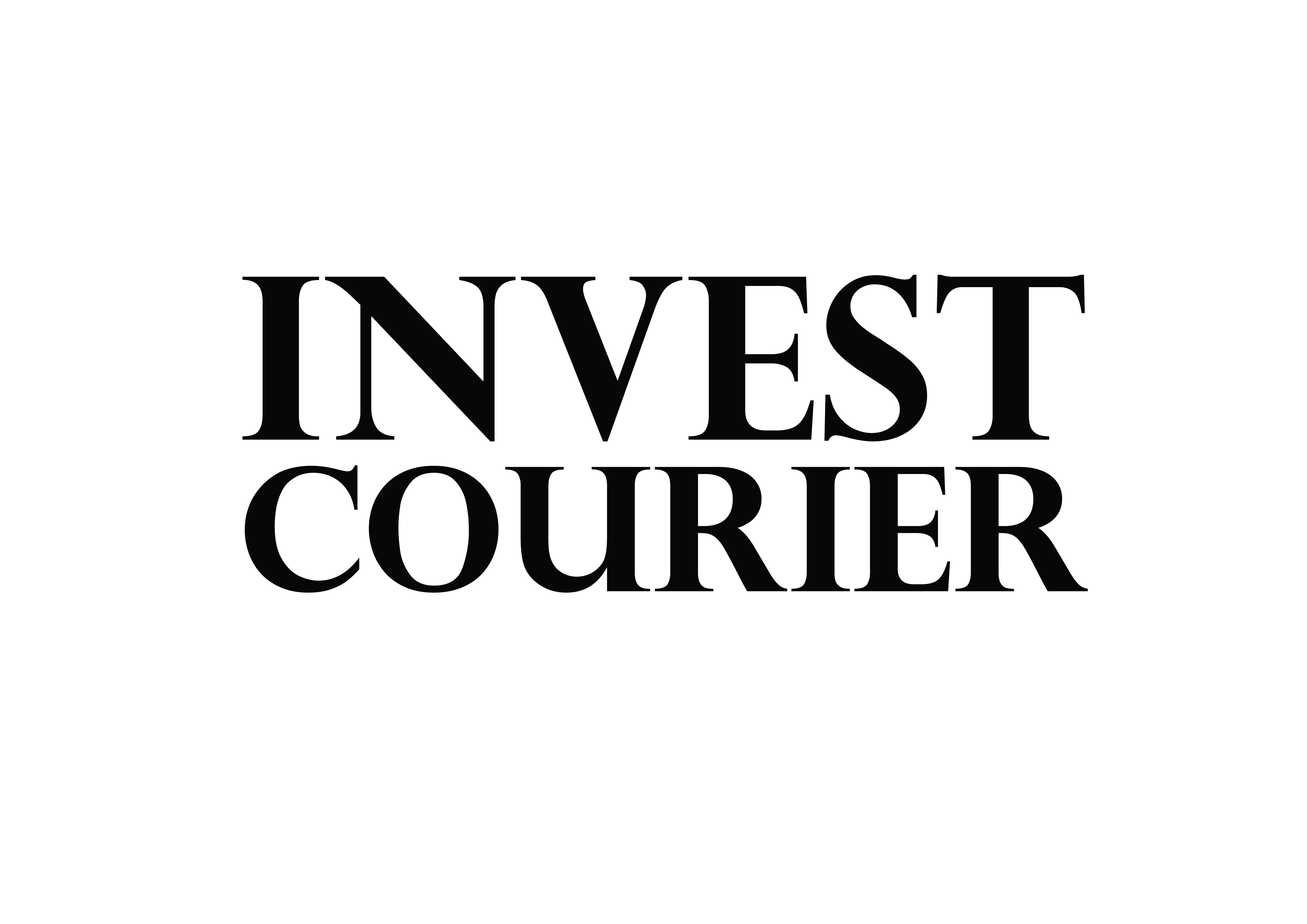The e-learning industry is booming, with the market expected to hit $319 billion by 2029. If you have expertise to share, turning it into a profitable digital product is easier than ever. All you need is a laptop, communication skills, and a proven roadmap.
Many entrepreneurs, like Miss Excel, have built six-figure businesses by packaging their knowledge. Whether you’re a seasoned professional or just starting, this guide breaks down the process into 17 actionable steps. You’ll learn how to validate your idea, craft engaging content, and reach a global audience.
From topic selection to scaling your sales, each phase is designed for success. Ready to transform your skills into passive income? Let’s dive in.
Key Takeaways
- The e-learning market is rapidly growing, offering huge profit potential.
- A structured 17-step framework simplifies course creation and sales.
- Global reach is possible with minimal tools—just a laptop and expertise.
- Real-world examples, like Miss Excel, prove the model works.
- Key focus areas include validation, content quality, and audience growth.
Why Selling Online Courses Is a Lucrative Opportunity
Profitable opportunities in e-learning continue to expand rapidly. The sector grows at a 22.4% annual rate, proving digital education isn’t just a trend—it’s the future. Whether you’re a freelancer or established professional, packaging knowledge into scalable products unlocks new revenue streams.
The Growing E-Learning Market
Global adoption of digital learning surged during the pandemic but shows no signs of slowing. Webinars alone convert at 20%+ signup rates, making them ideal for validating demand. Industry leaders like Brian Dean leveraged this strategy:
“Pre-launch webinars for SEO That Works attracted 5,000+ attendees, proving the course’s market fit before creation.”
Benefits of Passive Income Streams
Once created, digital courses earn money while you sleep. Unlike traditional businesses, they require minimal upkeep. Consider these revenue models:
| Model | Pros | Cons |
|---|---|---|
| One-time sales | Immediate cash flow | Lower long-term value |
| Subscriptions | Recurring revenue | Higher churn risk |
| Tiered pricing | Scalable earnings | Complex to manage |
Establishing Yourself as an Industry Expert
Tiffany Aliche built a 7-figure brand by targeting underserved demographics. Her Live Richer Academy led to book deals and TV appearances. Authority opens doors to:
- Consulting gigs at premium rates.
- Sponsorships from aligned brands.
- Speaking engagements.
Your expertise gains value when packaged into structured learning. The time to start is now.
How to Create an Online Course and Sell It for Profit
Digital education has transformed how experts share knowledge and earn income. With tools like Canva and Descript, you can produce professional-grade content without expensive equipment. This accessibility fuels the creator economy, where niche skills become valuable digital products.
Turning Knowledge Into Digital Products
Miss Excel built a thriving business teaching spreadsheet skills to 17,000+ students. Her success proves you don’t need celebrity status—just actionable expertise. Follow these approaches:
- Repurpose blog posts or social media threads into course modules (saves 40% development time)
- Study Amanda Schonberg’s roller skating tutorials—she turned a hobby into six figures
- Use existing content as course foundations, then expand with video demonstrations
The Creator Economy Advantage
Platforms remove traditional barriers to entry. Compare popular options:
| Platform | Best For | Pricing |
|---|---|---|
| Thinkific | Beginners | $99/month |
| Kajabi | All-in-one solutions | $149/month |
| WordPress | Full customization | Varies by hosting |
Kiaundra Jackson shows how affiliate partnerships amplify reach. Her therapy marketing strategy leverages student communities as brand ambassadors. As detailed in our course creation guide, this model creates win-win growth.
Whether teaching Excel or roller skating, today’s tools put success within reach. Your expertise—packaged right—can build both income and authority.
Choosing Your Perfect Course Topic
The sweet spot between passion and demand defines winning course topics. Like a compass, the right framework guides you toward subjects that inspire both you and your students.
Using the Ikigai Method for Topic Selection
Japanese philosophy meets modern education in this proven approach. The Ikigai diagram identifies overlaps between:
- What you love (passion)
- What you’re good at (skills)
- What people need (market demand)
- What pays well (monetization)
Jean-Martin Fortier’s Market Gardener Institute exemplifies this. His small-scale farming course combines agricultural passion with rising demand for sustainable food.
Balancing Passion With Market Demand
Google Keyword Planner reveals surprising gaps. “Online yoga courses” get 22,000 monthly searches, but “chair yoga for seniors” has 40% less competition.
“We targeted organic vegetable growers when everyone focused on industrial farms. That specificity built our waiting list.”
Identifying Your Unique Value Proposition
Compare Yale’s Science of Wellbeing (2.4 million enrollments) with cat training courses. Both succeed by serving distinct target audiences.
Underserved niches like Black women’s finance outperform generic advice. Your UVP emerges when solving specific problems for defined groups.
Conducting Essential Market Research
Market research separates profitable courses from guesswork, revealing exactly what students need. You’ll discover three proven methods to validate demand before investing development time.
Decoding Demand With Google Trends
Seasonal interest spikes indicate prime launch windows. For example, “content marketing” searches surge every January—ideal timing for related courses.
Compare related terms like “SEO writing” versus “blogging for business.” The latter has 30% higher sustained interest, suggesting stronger monetization potential.
Mining Niche Communities for Insights
Reddit and Quora threads expose raw frustrations. Try these engagement scripts:
- “What’s the #1 challenge you face with [topic]?”
- “If you could magically solve one problem, what would it be?”
Brian Dean used similar questions for SEO That Works, discovering students wanted actionable checklists over theory.
The 15-Minute Validation Interview
Schedule calls with 10+ ideal students. Ask about:
“What resources have you tried? Why did they fall short?”
This exposes gaps competitors miss. One yoga instructor discovered her audience needed posture corrections for desk workers—a niche she dominated.
Competitor Gap Analysis
Udemy’s marketplace reveals underserved angles. Compare top courses on Skillshare:
| Course Topic | Student Complaints | Opportunity |
|---|---|---|
| Photoshop Basics | “Too many tool explanations” | Project-based learning |
| Social Media Marketing | “No TikTok strategies” | Platform-specific modules |
The Sew It! Academy grew by analyzing Facebook groups. They noticed beginners struggled with pattern adjustments—now their bestselling module.
Armed with this research, you’ll create courses that sell from day one.
Defining Clear Learning Outcomes
Clear learning outcomes transform random lessons into life-changing skills. They guide your content and show students exactly what they’ll achieve. Without them, even brilliant courses feel disjointed.

The ABCD Method for Outcome Creation
Educators use the ABCD framework to craft razor-sharp goals. Break it down:
- Audience: Who’s learning? (e.g., “Bakers”)
- Behavior: What will they do? (“master French croissant techniques”)
- Condition: Under what constraints? (“using standard home ovens”)
- Degree: How well? (“with 90% accuracy in 6 weeks”)
*Sew It! Academy* applied this to structure their sewing modules. Beginners progress from threading machines to drafting patterns in 12 weeks.
Aligning Outcomes With Student Goals
Ask: “What pain points did your research uncover?” A template helps:
“By [timeline], [audience] will [action] to achieve [result].”
For example, “By week 4, marketers will write SEO headlines that boost click-through rates by 20%.”
Creating Measurable Achievements
Certifications attract some learners, but skill-based results drive retention. Compare:
| Outcome Type | Example | Pricing Tier |
|---|---|---|
| Certificate | “Complete 10 lessons” | $49 |
| Skill Mastery | “Debug Python code independently” | $299 |
High-value outcomes justify premium pricing. They also turn students into testimonials.
Validating Your Course Idea Before Creation
Smart creators validate their ideas before hitting record. Testing demand with real money separates viable concepts from time-wasters. This phase builds confidence while revealing critical adjustments needed.
Building a Minimum Viable Product
An MVP tests core assumptions with minimal effort. Digital marketer Kaleigh Moore validated her writing course by:
- Selling $997 masterclass spots before filming
- Using Shopify to collect pre-launch payments
- Tracking website conversion rates (25+ sales = green light)
Creating Effective Pre-Sale Campaigns
Compare validation methods side-by-side:
| Tool | Conversion Benchmark | Best For |
|---|---|---|
| Free webinar | 15% signup-to-purchase | High-ticket offers |
| $49 mini-course | 10% email click-through | Testing content appeal |
“Our pre-sale covered production costs before we wrote one lesson. That de-risked the entire project.”
Interpreting Early Feedback Signals
Watch for these feedback indicators:
- Red flag: Less than 10% conversion on low-tier offers
- Positive sign: 3+ unprompted testimonials during pre-sales
Course sales validation follows the 80/20 rule—20% of testers should show strong interest before full development.
Structuring Your Course Content
Great course design feels like a guided journey, not random lessons. The Market Gardener Institute’s 40-module structure proves this—their students complete 83% more content than industry average. Your blueprint should balance education with engagement.
Breaking Content Into Logical Modules
Think like a curriculum designer. A 5-module marketing course might flow:
- Foundation: Audience research frameworks
- Creation: Content pillar development
- Optimization: SEO and conversion tweaks
- Distribution: Multi-channel strategies
- Analysis: Performance measurement
Each module builds on the last. This progression prevents overwhelm while ensuring skill mastery.
Designing Progressive Lesson Plans
Attention spans demand smart formatting. Follow these video guidelines:
“Keep demonstrations under 10 minutes—the sweet spot for retention. Break complex topics into digestible chunks.”
Photography instructors boost engagement with live editing demos. Students see immediate application of theory.
Balancing Theory With Practical Exercises
Finance courses thrive with downloadable Excel templates. These hands-on tools reinforce concepts better than lectures alone.
Accessibility matters too. Always include:
- Closed captions for hearing-impaired learners
- Transcript PDFs for visual reference
- Alternative text for all images
When your content flows logically, students invest more time and achieve better results. That’s the hallmark of professional course design.
Selecting the Right Course Format
Your course format shapes the learning experience and revenue potential. From bite-sized tutorials to intensive masterclasses, each way of delivering content serves different goals. The choice impacts completion rates, student satisfaction, and ultimately—your income.
Mini-Courses vs Masterclasses
Instagram expert Jenn Herman proved the power of focused learning. Her 7-day email sequence on Instagram SEO converted at 38%, while comprehensive programs often struggle to hit 15%.
Consider these format comparisons:
| Type | Duration | Price Range | Best For |
|---|---|---|---|
| Mini-course | 1-2 weeks | $100-$300 | Quick skill acquisition |
| Masterclass | 8-12 weeks | $1,500-$5,000 | Career transformation |
“Our 12-week cohort model with weekly Zoom sessions achieves 73% completion—nearly double industry averages.”
Live or Self-Paced Delivery
Real-time interaction boosts accountability. Yoga teacher Adriene Mishler found her live Q&As reduced student dropouts by 60%. But self-paced options scale better.
Hybrid models solve this dilemma:
- Pre-recorded core lessons
- Monthly live office hours
- Private community access
Finding the Ideal Length
Attention spans dictate structure. Research shows:
- Under 10-minute videos maintain 90% viewership
- 5-7 module courses have highest completion
- Bonus content works best when optional
Platform choice matters too. Thinkific simplifies self-paced delivery, while Zoom+Google Classroom suits interactive programs. Match your format to both student needs and teaching style.
Producing High-Quality Course Materials
Quality production doesn’t require Hollywood budgets—just smart techniques. With free tools and strategic planning, your video lessons can rival professional studios. This section reveals cost-effective methods to impress students while meeting accessibility standards.
Affordable Video Production Secrets
Lighting makes the biggest difference for under $200. Try these setups:
- Key lights: Two LED panels at 45-degree angles ($80/set)
- Budget alternative: Ring light with diffuser ($35)
For editing, compare popular options:
| Tool | Best For | Learning Curve |
|---|---|---|
| ScreenFlow | Mac users | 1 hour |
| Premiere Pro | Advanced effects | 10+ hours |
| OBS Studio | Free screen recording | 30 minutes |
Designing Supplemental Resources
Interactive materials boost engagement. Canva templates help create:
- Printable workbooks (saves students 2+ hours/week)
- Cheat sheets for quick reference
- Progress tracking pages
“Our yoga students loved pose modification cards—completion rates jumped 22%.”
Meeting Accessibility Guidelines
Inclusive design expands your audience. Essential steps include:
- Adding SRT caption files to all videos
- Writing alt text for diagrams
- Providing audio descriptions
These adjustments take minutes but demonstrate professionalism. They also comply with ADA standards, avoiding legal risks.
Choosing the Best Course Platform
Your course platform is the foundation of your digital classroom. It impacts everything from student experience to your revenue share. With dozens of options available, selecting the right one requires careful evaluation.
Marketplace vs Standalone Solutions
Udemy offers built-in traffic but takes 50% of your sales. This trade-off works for some creators:
- Marketplace pros: Immediate audience access, handling of payments and taxes
- Cons: Limited branding, restrictive pricing, revenue splits
Standalone platforms like Teachable give full control. Yoga teacher Adriene Mishler migrated to Thinkific, gaining:
- Custom branding options
- Higher profit margins
- Student data ownership
Must-Have Platform Features
Essential tools streamline your operations. Look for these capabilities:
| Feature | Why It Matters |
|---|---|
| Drip content | Releases lessons on schedule |
| Quiz builders | Validates learning progress |
| Integrated payments | Simplifies checkout |
Kajabi stands out with all-in-one marketing tools. Their funnel builder helps convert visitors into students.
Technical Considerations
WordPress LMS plugins offer flexibility but require maintenance. All-in-one solutions handle:
- Hosting reliability
- GDPR compliance
- Automatic updates
“Our Podia to Thinkific migration cost $2,100 but tripled our conversion rates.”
For EU students, ensure your website meets privacy regulations. LearnWorlds includes built-in compliance tools.
Discover more about monetizing your expertise through platform selection.
Setting the Right Price for Your Course
Strategic pricing turns knowledge into sustainable revenue streams. Your pricing reflects expertise while ensuring accessibility for ideal customers. Unlike physical products, digital courses have unique monetization advantages—zero inventory costs and infinite scalability.
Competitor Benchmarking Techniques
Analyze 10+ comparable courses using this framework:
- Note base prices and premium tiers
- Track included bonuses (templates, community access)
- Document payment plan options
Marketing expert Marie Forleo discovered a pricing sweet spot through testing:
“Our $997 B-School tier outperformed $497 and $1,997 versions—the perfect balance of perceived value and affordability.”
Value-Based vs Cost-Plus Models
High-ticket courses with coaching demonstrate value pricing. Compare approaches:
| Model | Calculation | Best For |
|---|---|---|
| Value-Based | 5-10x student ROI | Transformational programs |
| Cost-Plus | Expenses + 30% margin | Introductory courses |
Tiered Offerings That Convert
Photography educator Jared Polin increased sales by 60% with this structure:
- $197 Basic: Video lessons + PDF guides
- $497 Pro: Add-on critique sessions
- $997 Elite: Includes 1:1 coaching
Payment flexibility boosts conversions. Consider:
- 3-installment plans (33% conversion lift)
- 7-day refund windows (
- Annual subscription discounts
International money handling requires VAT compliance. Platforms like Teachable automatically collect EU taxes—one less operational headache.
Building a High-Converting Sales Page
Your sales page is the digital handshake that convinces visitors to become paying students. Unlike physical stores, you have seconds to demonstrate value before customers click away. The right combination of psychology and design turns skimmers into enrollments.
Crafting Compelling Benefit Statements
Visitors care about outcomes, not features. Compare these approaches:
| Weak Statement | Powerful Alternative |
|---|---|
| “10 video lessons” | “Master Excel formulas in 14 days—even if you’ve failed before” |
| “Professional instructor” | “Learn from a CFO who trained Fortune 500 teams” |
LearnWorlds templates highlight transformation with “Before/After” story frameworks. One photography course increased conversions by 27% by showing student work progression.
Incorporating Social Proof Effectively
Trust elements should appear “above the fold” where 81% of attention focuses. Stack credibility with:
- Video testimonials showing real students (34% conversion lift in case studies)
- Live enrollment counters creating urgency
- Security badges for payment protection
“Adding ‘3,200+ students enrolled’ beneath our CTA boosted signups by 19% overnight.”
Optimizing for Conversions
Heatmap tools like Hotjar reveal critical patterns:
- Place CTAs where 75% of users scroll
- Use contrasting colors for buttons (orange converts 32% better than blue)
- Ensure mobile load times under 3 seconds
Email capture forms perform best when offering immediate value. Try “Get the first lesson free” instead of generic newsletter signups.
Launching Your Course Successfully
The first 72 hours determine 80% of your course’s long-term traction. Smart creators build anticipation through sequenced marketing touchpoints. This three-phase approach turns interest into enrollments.
Building Pre-Launch Momentum
Start your countdown 14 days early. Digital marketer Ezra Firestone generated $23k from a 200-person webinar using this calendar:
- Day 14-7: Tease transformations with student success snippets
- Day 6-3: Share instructor behind-the-scenes prep videos
- Day 2-0: Release limited bonus for early enrollments
Affiliates amplify reach. Offer 40% commissions during the first week—convert their audiences into your students.
Crafting Your Email Sequence
A 7-day drip campaign nurtures leads. ConvertKit’s highest-performing template includes:
“Day 3: ‘The mistake 92% of beginners make’ – reveals common pain points your course solves.”
| Goal | CTR Benchmark | |
|---|---|---|
| 1: Story | Build connection | 22% |
| 3: Problem | Highlight need | 18% |
| 5: Offer | Drive sales | 9% |
Webinars That Convert
Live demonstrations boost trust. Yoga teacher Adriene Mishler achieves 38% conversion rates by:
- Reserving Q&A for the final 15 minutes
- Using screen-sharing for real-time tutorials
- Offering webinar-only pricing
Post-event, send replay links with urgency triggers: “Bonus expires in 48 hours.”
Sustaining Post-Launch Growth
Onboarding emails reduce refund requests. Structure your 30-day nurture sequence:
- Day 1: Celebration + next steps
- Day 7: Check-in + troubleshooting
- Day 30: Upsell opportunity
Track open rates—below 40% signals needed content adjustments.
Marketing Strategies for Course Sales
Effective promotion separates thriving course creators from those struggling to gain traction. While quality content forms the foundation, visibility determines your course sales success. Modern educators use a three-pronged approach: organic content, paid ads, and partnership networks.
Content Marketing for Course Creators
Evergreen content builds lasting authority. Photography teacher Jared Polin grew his business by publishing “Beginner Photography Tips” guides that consistently rank in Google’s top 3 results. This strategy works because:
- SEO clusters address related queries (e.g., “aperture settings” + “lighting techniques”)
- Pinterest Idea Pins drive 300% more traffic than standard pins
- Repurposed content fuels email sequences and social posts
“Our Pinterest traffic converts at 22%—higher than any other social media platform.”
Running Targeted Ad Campaigns
Precision targeting maximizes ad spend. Compare these Facebook approaches:
| Strategy | CTR Benchmark | Best For |
|---|---|---|
| Interest-based | 1.8% | New audiences |
| Lookalike audiences | 2.4% | Scaling proven converts |
Retargeting recaptures lost leads. Set 90-day cookies to remind visitors about:
- Abandoned carts
- Viewed sales pages
- Downloaded free resources
Building Affiliate Partnerships
Miss Excel leveraged student ambassadors to expand her reach. Top performers receive:
- 40% commission on referred sales
- Early access to new content
- Exclusive training webinars
This marketing triad—content, ads, and affiliates—creates multiple conversion pathways. Test each channel to find your optimal mix.
Scaling Your Online Course Business
Growth-focused creators transform single courses into thriving education empires. The Budgetnista built a 2M+ member community, proving that strategic scaling multiplies revenue. This phase focuses on systems that work while you sleep.

Creating Course Bundles and Sequences
Upsell paths turn buyers into lifelong learners. Successful sequences often follow this pattern:
- Entry point: $197 introductory course
- Mid-tier: $497 certification program
- Premium: $199/month mastermind group
Photography educator Sue Bryce increased revenue 300% by adding portfolio review add-ons. Bundles perform best when solving progressive problems.
Developing Recurring Revenue Models
Membership sites outperform one-time sales. Compare these business models:
| Model | LTV | Retention Tactics |
|---|---|---|
| One-time | $497 | Email nurture |
| Monthly | $2,388/yr | Live Q&A sessions |
“Our alumni network’s 73% renewal rate comes from exclusive mastermind groups.”
Automating Student Onboarding
Zapier workflows save 15+ weekly hours. Set up these automations:
- Welcome emails with course access
- Drip content based on progress
- Community invitations after Module 3
Circle.so outperforms Facebook Groups for community engagement, with 40% higher activity rates. Automated check-ins keep students on track without manual follow-ups.
Conclusion
Now’s the time to turn knowledge into a thriving business. You’ve learned how to validate ideas, produce standout content, and scale your vision. From pre-launch research to automated systems, each step builds toward success.
Take the 30-day challenge: Draft your course blueprint. Follow the path of creators like Miss Excel, who grew from $0 to $10k/month by niching down. Your expertise matters—share it with the world.
Ready to get started? Download our free course planning toolkit today. Your first lesson could change someone’s life—including yours.
Your skills deserve the spotlight. Shine bright.
FAQ
What’s the best way to choose a profitable course topic?
Focus on merging your expertise with market demand. Use tools like Google Trends or niche forums to spot trending topics while ensuring they align with your skills.
How do I validate my course idea before investing time?
Test interest with a pre-sale campaign or a simple landing page. Gather feedback from potential students to refine your concept before full production.
What’s the ideal course length for engagement?
It depends on your audience. Mini-courses (1-3 hours) work for quick wins, while in-depth masterclasses (10+ hours) suit complex subjects. Balance depth with student attention spans.
Should I host my course on my own website or a marketplace?
Marketplaces like Udemy offer built-in audiences but lower profits. Standalone platforms (Thinkific, Teachable) give more control and branding flexibility.
How much should I charge for my online course?
Research competitors, then price based on value. Tiered pricing (-0+) works well—offer basic to premium options with bonuses like coaching or templates.
What’s the most effective marketing strategy for new courses?
Combine content marketing (blogs, YouTube) with targeted ads and email sequences. Webinars and affiliate partnerships also boost visibility and sales.
Do I need professional equipment to record course videos?
Start with a decent microphone and smartphone camera. Focus on clear audio and lighting—authenticity often beats overproduced content.
How can I scale my course business beyond one product?
Bundle courses, offer memberships, or create advanced follow-ups. Automate onboarding with tools like Zapier to handle growing student numbers efficiently.


